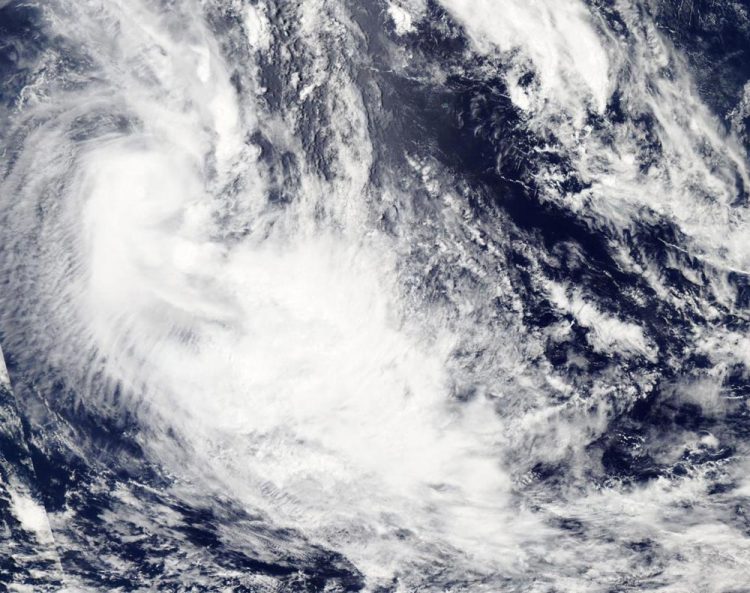NASA spies Tropical Cyclone 08P's formation

On Feb. 21, the MODIS instrument aboard NASA's Aqua satellite captured a visible image of newly formed Tropical Cyclone 08P. Credits: NASA Goddard MODIS Rapid Response Team
Tropical cyclone 08P developed on Feb. 22 at 0300 UTC (Feb. 21 at 10 p.m. EST), and strengthened by 1500 UTC (10 a.m. EST) into a tropical storm with maximum sustained winds near 35 knots (40 mph/62 kph).
08P is expected to maintain strength over the next day as it moves in a southeasterly direction in the South Pacific's open waters. 08P was located near 25.4 degrees south latitude and 165.8 degrees west longitude, about 660 nautical miles south-southeast of Pago Pago, American Samoa.
08P is moving to the southeast at 33 knots (38 mph/61 kph).
Like its predecessor Bart, Tropical Cyclone 08P is also dealing with vertical wind shear despite forming under those conditions.
The MODIS or Moderate Resolution Imaging Spectroradiometer instrument aboard NASA's Aqua satellite took a visible image of the storm on Feb. 21 as it was developing.
The MODIS image showed wind shear was pushing the clouds and strongest storms southeast of the low-level center of circulation. The MODIS image also showed that 08P is elongated from northwest to southeast.
The Joint Typhoon Warning Center or JTWC noted that dry air associated with a nearby trough (elongated area of low pressure) is wrapping around the northern quadrant of Tropical Cyclone 08P. JTWC expects 08P to become extra-tropical in a day.
Media Contact
All latest news from the category: Earth Sciences
Earth Sciences (also referred to as Geosciences), which deals with basic issues surrounding our planet, plays a vital role in the area of energy and raw materials supply.
Earth Sciences comprises subjects such as geology, geography, geological informatics, paleontology, mineralogy, petrography, crystallography, geophysics, geodesy, glaciology, cartography, photogrammetry, meteorology and seismology, early-warning systems, earthquake research and polar research.
Newest articles

Sea slugs inspire highly stretchable biomedical sensor
USC Viterbi School of Engineering researcher Hangbo Zhao presents findings on highly stretchable and customizable microneedles for application in fields including neuroscience, tissue engineering, and wearable bioelectronics. The revolution in…

Twisting and binding matter waves with photons in a cavity
Precisely measuring the energy states of individual atoms has been a historical challenge for physicists due to atomic recoil. When an atom interacts with a photon, the atom “recoils” in…

Nanotubes, nanoparticles, and antibodies detect tiny amounts of fentanyl
New sensor is six orders of magnitude more sensitive than the next best thing. A research team at Pitt led by Alexander Star, a chemistry professor in the Kenneth P. Dietrich…





















